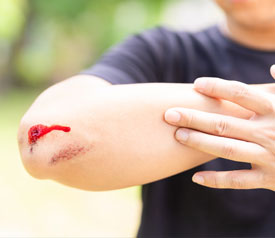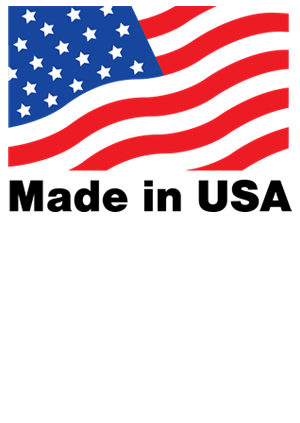
Cuts and abrasions are a common occurrence in nearly every sport. From full-contact sports to more laid-back sports, these injuries can occur suddenly and lead to lost time on the court or field. It’s vital to take proper care of a sports related cuts or abrasion to heal quickly and get back in the game.
In this article, we’ll discuss how cuts and abrasions can occur, the best practices for healing an injury, and why the proper bandaging adhesive tape can make a huge difference in the healing process.
How Cuts and Abrasions Can Occur
Cuts, abrasions, and other serious skin damage can occur during gameplay of any type of sport or activity. While each sport is different, these injuries can arise due to several different circumstances:
- Contact with another player or object: Cuts and abrasions can occur when a player comes into contact with another player or object, such as a ball, bat, or helmet.
- Falls or collisions: Cuts and abrasions can happen when a player falls or collides with another player or the ground.
- Equipment failure: Cuts and abrasions are common if sports equipment fails, such as a helmet or protective padding.
- Overuse or repetitive motion: Cuts and abrasions are often seen when a player repetitively uses the same muscles or joints, causing friction or irritation.
These are just a few ways skin-related injuries can happen during a sporting event. While certain sports are more prone to injuries, such as basketball or football, even “lighter” sports like golf and bowling can lead to cuts or abrasions. Every sport has its fair share of rough or sharp objects along with fast movement which could easily lead to a skin injury.
How To Cover Your Wounds When Swimming
What to Do About a Cut or Abrasion
As with any cut or abrasion, common first aid is always the best option right after the injury occurs. Be sure to take the following steps right after an injury happens during a sporting event:
- Stop the bleeding: Apply pressure to the cut using a clean cloth or bandage. Elevate the injured limb or body part, if possible. Carefully wipe away any blood until the wound stops bleeding.
- Clean the cut: Gently wash the cut with soap and water to remove any dirt or debris. If available, use an antibacterial cleanser on the wound to help prevent infection.
- Apply an antibiotic ointment: Apply a thin layer of antibiotic ointment to the cut. This will help seal the cut or abrasion and keep out bacteria.
- Cover the cut: Cover the cut with a bandage or dressing to protect it from further injury and to keep it clean. Adhere the bandage with Hy-Tape to allow for a tight hold that won’t irritate the nearby skin.
- Monitor for infection: Watch for signs of infection, such as redness, swelling, or increased pain over the following days. If any complications arise, seek medical attention.
These steps will allow for the cut or abrasion to quickly begin to heal. Depending on the severity of the injury, the player may be able to return to the game on the same day.
Read: Stocking A Proper First Aid Kit
How Hy-Tape Can Be Helpful for Sports Injuries
When it comes to any injury that requires a bandage, securing the bandage with Hy-Tape is always a good idea. Hy-Tape offers a variety of benefits over common bandaging tape products.
Hy-Tape is designed with a special adhesive that features zinc oxide which helps protect the skin from irritation. It’s also made to hold tight while easily peeling away when new bandaging is needed. Hy-Tape is waterproof, ensuring that liquid doesn’t infiltrate under the bandaging. Hy-Tape is also designed to be flexible and allows for easy movement which can be vital for players who return to their game with a bandage in place.
Waterproofing Your Wound Dressing for Swimming
Another benefit of Hy-Tape is its lack of allergens. While many other adhesive bandage tapes feature latex and other materials, Hy-Tape does not include these which greatly lowers the chance of an allergic reaction for the injured player.
Adding Hy-Tape to an emergency first aid kit can be critical in the healing process of a sports injury. When it’s available, Hy-Tape can help tightly seal the bandage and keep it in place. When used properly with the right type of bandage for the specific injury, this tape can help speed the healing process.
Whether an individual athlete or a sports team’s medical staff member, Hy-Tape should be at the top of your list of adhesive tapes for player cut and abrasion treatments. Learn more about Hy-Tape by contacting us now or placing an order online.

